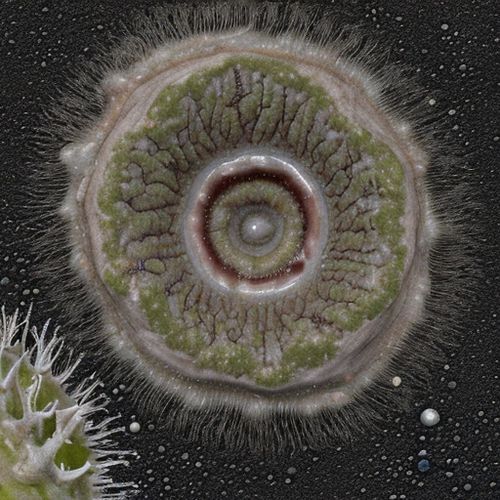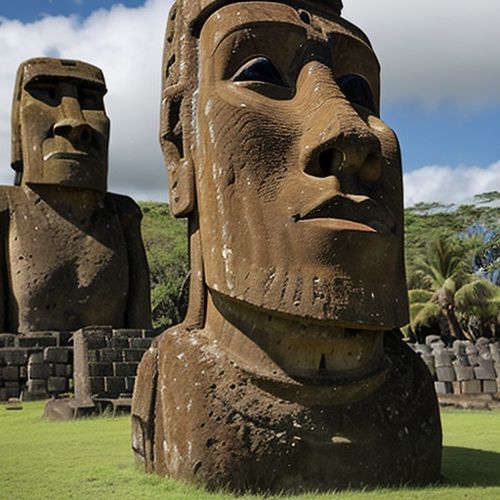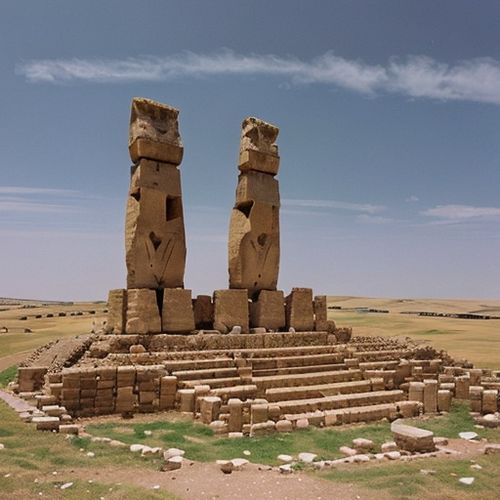The ancient site of Göbekli Tepe in Turkey stands as one of the most enigmatic archaeological discoveries of our time. Dating back approximately 11,500 years, this prehistoric marvel predates the Egyptian pyramids by a staggering 7,000 years. Its existence challenges long-held assumptions about the development of human civilization, particularly the idea that complex societies emerged only after the advent of agriculture. The sheer scale and sophistication of Göbekli Tepe’s construction suggest that hunter-gatherer societies were capable of far more than previously imagined.
Located in the southeastern Anatolia region, Göbekli Tepe consists of a series of massive stone pillars arranged in circular formations. These pillars, some weighing up to 20 tons, are intricately carved with depictions of animals, abstract symbols, and humanoid figures. The precision and artistry of these carvings are astonishing, especially considering the tools available at the time. Archaeologists have yet to uncover any evidence of permanent settlement at the site, leading to widespread speculation about its purpose. Was it a temple, a ceremonial center, or something else entirely?
The discovery of Göbekli Tepe has forced a reevaluation of the timeline of human cultural evolution. Traditional theories posited that large-scale construction projects were only possible after the establishment of agrarian societies, which provided the necessary surplus of food and labor. Yet here we have a monumental structure built by people who were still primarily hunters and gatherers. This raises profound questions about the motivations behind its construction. What compelled these ancient people to invest so much time and effort into a project of this magnitude?
One prevailing theory is that Göbekli Tepe served as a religious or ritualistic site. The absence of domestic structures and the presence of elaborate carvings hint at a space dedicated to spiritual or communal activities. Some researchers suggest that the site may have been a gathering place for seasonal ceremonies, possibly linked to astronomical events. The alignment of certain pillars with celestial bodies lends credence to this idea. However, without written records, these interpretations remain speculative.
Another intriguing aspect of Göbekli Tepe is its deliberate burial. Around 8,000 BCE, the site was carefully covered with soil, preserving it for millennia. This act of concealment adds another layer of mystery. Why go to such lengths to hide a place that clearly held great significance? Some scholars propose that the burial was a ritualistic act, perhaps marking the end of an era or the abandonment of certain beliefs. Others speculate that it was a practical measure to protect the site from invaders or natural elements.
The implications of Göbekli Tepe extend beyond archaeology. If hunter-gatherer societies were capable of such feats, it suggests that the human impulse to create and organize predates settled agriculture. This challenges the conventional narrative that civilization emerged solely as a response to the demands of farming. Instead, it opens the door to the possibility that spiritual or social motivations played a pivotal role in the development of complex societies.
Despite decades of research, Göbekli Tepe continues to guard its secrets. Excavations have revealed only a fraction of the site, and much of it remains untouched. Each new discovery brings more questions than answers. Who were the people who built this extraordinary place? What beliefs or traditions drove them to create such a lasting monument? And why, after thousands of years, does Göbekli Tepe still captivate our imagination?
As archaeologists delve deeper into the mysteries of Göbekli Tepe, one thing becomes increasingly clear: this ancient site is a testament to the ingenuity and ambition of our ancestors. It reminds us that history is far more complex and wondrous than we often assume. The stones of Göbekli Tepe whisper stories of a forgotten past, inviting us to listen and learn from the echoes of time.

By Emily Johnson/Apr 10, 2025

By Sarah Davis/Apr 10, 2025

By Christopher Harris/Apr 10, 2025

By John Smith/Apr 10, 2025

By Ryan Martin/Apr 10, 2025

By Olivia Reed/Apr 10, 2025

By Sarah Davis/Apr 10, 2025

By Victoria Gonzalez/Apr 10, 2025

By Laura Wilson/Apr 10, 2025

By Lily Simpson/Apr 10, 2025

By Grace Cox/Apr 10, 2025

By Emma Thompson/Apr 10, 2025

By Grace Cox/Apr 10, 2025

By Thomas Roberts/Apr 10, 2025

By Laura Wilson/Apr 10, 2025

By Benjamin Evans/Apr 10, 2025

By Megan Clark/Apr 10, 2025